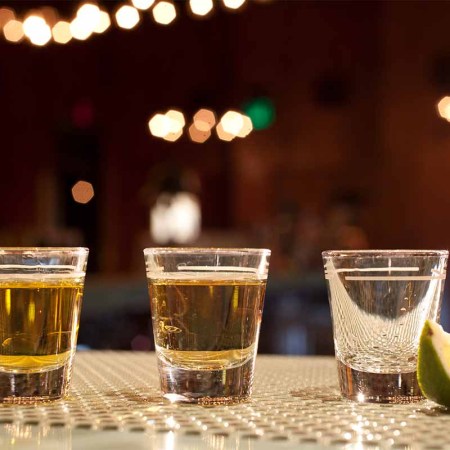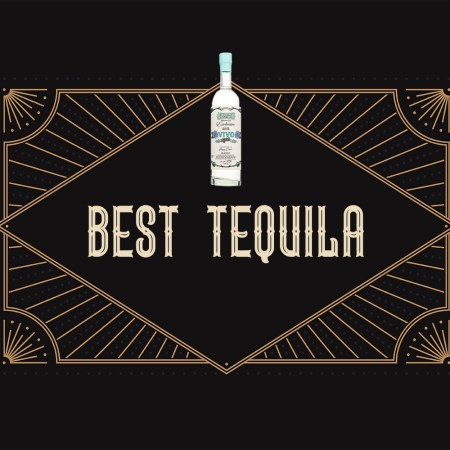During the pandemic and shortly afterward, you drank a lot of tequila – and a lot of expensive tequila at that. Or, at least, that’s what all the news stories told you. Of course, the news since then also told you that you were drinking more non-alcoholic drinks and more canned cocktails. You adopted a puppy, learned to bake bread and watched Squid Game.
Unless you didn’t. And that’s my big takeaway from the data released last month from the Consejo Regulador del Tequila (CRT), the body that certifies and tracks tequila. The data that’s getting the most attention is that total tequila production fell for the first time since 2015, as did total exports of the agave spirit. Production went from 651 million liters in 2022 to 599 million liters in 2023, and exports went from 417 million liters to 399. That’s an 8% drop and a 4.3% drop, respectively.
The Distilled Spirits Council of the United States (DISCUS) released their annual data dump this week. What is that, you ask? It’s a compendium of actual consumer behavior based on sales data within the U.S. When DISCUS released the 2022 numbers last year, the news told us that tequila was “poised to overtake vodka as the best-selling liquor in the United States this year.”
Except it didn’t, and it never was poised to do so. And that’s the point I want to make.
Numbers don’t lie — they are as close to the truth as we can get. But our interpretation of numbers can be biased, prejudiced and just plain flawed. And I recognized that when I read “Americans Will Spend More on Mezcal and Tequila This Year Than Whiskey.” (Not what DISCUS reported, not what would be reasonably predicted from their data.)
So what does the DISCUS 2023 data tell us? In short, a different story than the CRT tells us.
The CRT data has fueled suggestions that the tequila craze is over. But the DISCUS data shows tequila and mezcal sales remained healthy in 2023 — grew, even. Tequila and mezcal sales in the U.S. were up in 2023 by almost 6% in volume and almost 8% in revenues. So why the dip in production and exports?
First, it’s important to consider what happened in 2020. When COVID kept us all indoors, sales of aged tequilas went nuts. Liquor stores were reporting sellouts on reposados, añejos and extra añejos. Those tequila expressions must be rested in a barrel for a minimum of two months, 12 months and three years, respectively. So once they started selling out, tequila companies started filling wooden barrels to try to ensure they could take advantage of the “growing market.” At the same time, they were blowing out their unaged blancos, so they had to step up production. And the key word here is “production.”
Mexico’s Tequila Exports to the US Were Down in 2023
Those numbers tell a more complicated story than you might thinkIf you look at CRT data, production (which isn’t the same as sales) jumped from 374 million liters in 2020 to 527 million liters in 2021. That’s a 41% increase in the amount of tequila produced, the biggest year-on-year production growth tequila has experienced ever — or at least since 1995, which is as far back as the data on their website extends. Meanwhile, export data for that same period shows growth of 18.2%; notable, for sure, but nothing like that 41% production increase.
That suggests to me that the primary driver of production growth from 2020 to 2021 was to fill those barrels, to make the reposados, añejos and exta añejos for future sales. And that trend continued into 2022, which jumped another 23.6% over 2021. By 2023, the supply had caught up to market demand, so seeing production of tequila drop back a bit — to 599 million liters, which is still a whopping 60% higher than 2020 production levels — doesn’t strike me as any kind of market softening.
But let’s turn then to those export numbers. While not reflective of sales, strictly speaking, they’re a closer indicator of consumer demand than production. Data from the CRT indicate that total exports dropped by 4.2% globally and 5% to the United States, historically the largest market for tequila. That must indicate some level of softening, right?
Well, maybe. Or maybe not. In the past several years, tequila sales have grown both in terms of volume and price. People have been buying more tequila and paying more per bottle. That suggests to me that consumers (like you, like me) have been stocking up on something nice to share with friends.
But the average drinker isn’t sitting down in January and budgeting how much they intend to drink in a year and how much they intend to spend on those drinks. The explosion of expensive tequila sales we’ve seen in recent years? Those bottles usually don’t disappear on December 31. I mean, maybe your NYE party looks different than mine. But my guess is that some of the financial assistance that made its way to consumers in 2020 and 2021 gave birth to those fancy bottles of tequila that haven’t been drained entirely. So they haven’t been replaced yet, either.
Or maybe those fancy bottles never even made it to your home. As retailers saw their tequila stocks depleting, they ordered bigger numbers to ensure they’d stop running dry. Now those bottles are sitting in stock rooms. Same story with the distributors who supply those stores. They’ve got pallets of tequila in their warehouses, prepared to fill the hole you create when you empty that fancy bottle. But 5%? Given the pandemic growth the system had to contend with, that’s just an ebb that follows a flow. Those 2023 U.S. imports are still 113% (yes, more than double) the numbers of eight years earlier in 2015.
In that context, a 5% drop feels like, well, just that. A literal drop in an overall very large barrel of añejo tequila.
Join America's Fastest Growing Spirits Newsletter THE SPILL. Unlock all the reviews, recipes and revelry — and get 15% off award-winning La Tierra de Acre Mezcal.















